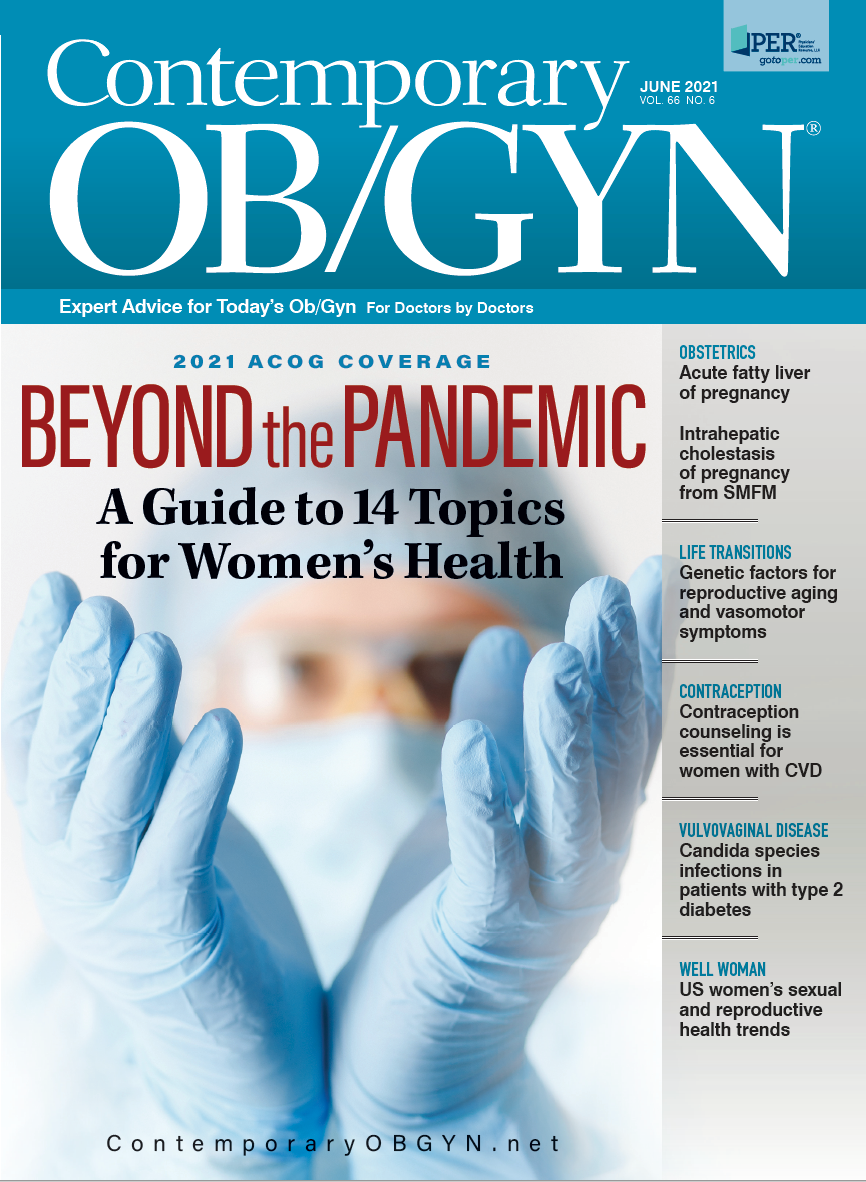Contraception for women with cardiovascular disease
Early and routine contraceptive counseling for all women of reproductive age with cardiovascular disease or cardiovascular risk factors is an essential component of comprehensive cardiovascular care, according to evidence-based recommendations of contraceptive options published in the Journal of the American College of Cardiology (JACC).
“This article is part of a 5-part series on cardio-obstetrics, aimed to provide practical guidance to cardiologists, obstetricians and primary care physicians caring for reproductive-aged women with cardiovascular conditions,” said senior author Kathryn J. Lindley, MD, an associate professor of medicine and ob/gyn at Washington University in St. Louis, Missouri. She is a cardiologist and has a dual appointment with both the department of medicine and ob/gyn.
Kathryn J. Lindley, MD

Lindley noted that the number of reproductive-aged women with underlying cardiovascular disease is rising and that most of these women are sexually active.
The manuscript is particularly germane for contraception because
cardiologists are not routinely trained on contraception and pregnancy planning during their cardiology fellowship, Lindley said. “Unfortunately, few of these patients have discussed pregnancy planning and contraception with their cardiologist, and other patients have received inaccurate information,” she said. “Given the high rate of unplanned pregnancy, and the serious consequences to both mom and baby when a woman has underlying cardiovascular disease, routine counseling on safe and effective contraception is essential.”
Due to the frequent care gaps during transition between pediatric and adult cardiology care, “these conversations should begin in adolescence in pediatric cardiology clinics, then continue into adult cardiology clinics for women with both congenital and acquired cardiovascular disease,” Lindley told Contemporary OB/GYN®.
The article advocates multidisciplinary, patient-centered reproductive planning. “Due to the safety and efficacy of long-acting reversible contraception (LARC), the intrauterine device (IUD) and subdermal implant are recommended for all women with underlying cardiovascular disease and cardiovascular risk factors, including adolescents and nulliparous women,” Lindley said.
Barriers to access to contraception should also be considered for women with underlying cardiovascular disease, including cost and pharmacy and clinic availability. “Multidisciplinary coordination is recommended to help overcome these challenges,” Lindley said. “It is probably not surprising to many that these conversations are not routinely taking place in cardiology clinics. In addition, some clinicians may be unaware of the excellent safety profile of LARCs for women with cardiovascular disease.”
However, ensuring that contraception counseling is a routine part of pediatric and adult cardiology clinic conversations “will require a shift in practice, and is compounded by barriers of time limitations in caring for complex patients,” said Lindley, director of the Center for Women’s Heart Disease at Washington University. “I believe a key solution to these challenges is collaborative, multidisciplinary care between cardiology and obstetric clinicians with cross-education.”
For pregnancy termination, either medical or surgical abortion may be acceptable for this patient population. Women with stable, well-controlled conditions, such as diabetes or hypertension, can safely undergo outpatient termination, while inpatient management should be considered for women at highest risk of abortion-related cardiovascular events, including those with complex congenital heart disease, significant coronary artery disease, severe cardiomyopathy, significant valvular disease or pulmonary arterial hypertension.
Lindley is excited and encouraged that reproductive planning and multidisciplinary pregnancy management for women with cardiovascular disease is gaining traction.
Because cardiovascular disease is the major contributor of rising rates of maternal mortality in the United States, “ongoing education of both the cardiology and obstetrics/gynecology communities and their effective partnership will be paramount to continue to improve patient care,” Lindley said.
__
Disclosure
Lindley reports no relevant financial disclosures.
Reference
Lindley KJ. Merz CNB, David MB. Contraception and reproductive planning for women with cardiovascular disease: JACC Focus Seminar 5/5. J Am Coll Cardiol. 2021 Apr 13;77(14):1823-1834. doi:10.1016/j.jacc.2021.02.025

Recap on reproductive rights with David Hackney, MD, MS
December 20th 2022In this episode of Pap Talk, we spoke with David Hackney, MD, MS, maternal-fetal medicine physician at Case Western Reserve University and chair of ACOG's Ohio chapter for a full recap of where restrictions on reproductive rights have been and where they're going.
Listen
In this episode of Pap Talk, Gloria Bachmann, MD, MSc, breaks down what it means to be a health care provider for incarcerated individuals, and explores the specific challenges women and their providers face during and after incarceration. Joined by sexual health expert Michael Krychman, MD, Bachmann also discusses trauma-informed care and how providers can get informed.
Listen
